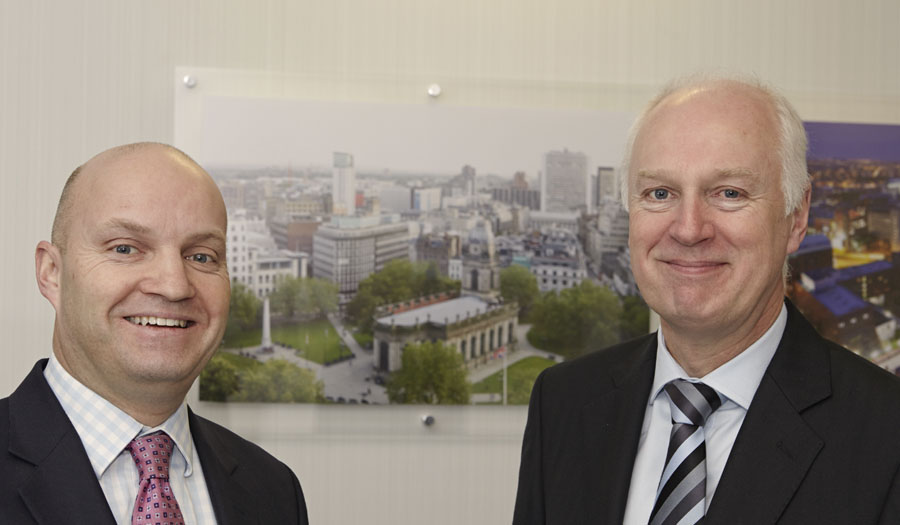Leading independent property consultancy, GVA has published its third annual study into the ownership of buildings within Birmingham city centre.
The latest edition of the ‘Who Owns Central Birmingham’ report provides an overall picture of the city’s investment market by analysing over 15 million square feet of commercial and retail space.
The report assesses the space based on a range of factors, including nationality of ownership, office stock by grade, ownership by type of investor and rates of churn.
Of the 15 million sq ft of total space in the city 70.3 per cent across both commercial and retail solely owned by UK investors.
Of the remaining stock, 29.7 per cent– representing 4.3 million sq ft – is either fully or partially owned by overseas investors. Joint ownership accounts for 12.2 per cent, with sole ownership totalling 17.5 per cent.
This is a slight reduction on the previous study, where 31 per cent of stock was held by foreign consortia.
Ian Stringer, Senior Regional Director, GVA, said: “The level of granularity which we are able to apply to this study makes it a valuable tool in understanding the state of the Birmingham investment market.
“Since we launched the first report in 2012, we have seen some significant changes to the ownership of properties within the city core. This has included an increase of just over 2 per cent in those properties that are fully owned by UK investors as the UK funds have come back into the market.
“Unsurprisingly given the difficult economic period that they have endured, the amount of Irish-owned interests in the city has fallen by half. Middle Eastern owners have remained steady at around two per cent, while Far Eastern investors have made their first forays into the city, with the purchase of Quayside Tower and 130 Colmore Row, which account for a little under one per cent of the total.
“While this currently accounts for around 0.9% of total ownership, with a recovering market and the city’s growing links with China, this could represent an important trend in further foreign investment.”
In the 12 months since the publication of the 2013 survey, approximately 1.2 million sq ft of office accommodation and 70,000 sq ft of retail space has been transacted,
Key transactions in this period include the purchases of One Brindleyplace by European fund Trinova Real Estate and Quayside Tower on Broad Street by Chinese consortium Peng Global Investors.
The Australian Government’s Future Fund also sold its 33 per cent stake in the 1.2 million sq ft Bullirng to the Canadian Pension Plan and Hammerson. Several Irish-owned assets were also acquired by UK investors.
The 260,000 sq ft One Snow Hill was also purchased by Union Invest for £125 million from fellow German organisation Comerz Real.
In terms of sectoral ownership, UK institutions own the majority of stock within the city (31 per cent), with 29.7 per cent owned by overseas investors. Of the remainder, UK property companies make up 22.7 per cent of stock and local Birmingham owners – including the City Council – representing 12.1 per cent.
The study also examines the length of time that office and retail properties have been under their current ownership, with an average ownership period of 9.6 years, showing a marginal rise from 9.1 years recorded in the 2013 study.
Jonathan Hillcox, Director, Investment, GVA, said: “The rise in length of ownership has been facilitated by the relatively low number of investment transactions over the last two years. However, it is expected that there will be an increase in the number of transactions during the course of the 2014/15 period, with this figure likely to fall as a result.
“The availability of Grade A accommodation, which constitutes around 41 per cent of total available stock, retains an almost even split between UK and overseas occupiers. However there is far less interest from this group in Grade B and C stock, the majority of which remains in the hands of domestic owners.
“There is, however, a considerable level of Grade A commercial opportunities in the pipeline, which will help to assuage the expected drought of top-end stock that we will be facing in the coming years while offering an attractive proposition to overseas investors looking for expansion or relocation properties.
For the purposes of the study, GVA has defined the city centre as the area contained within the old Inner Ring Road, but extended marginally at the Easter and Western extremities to encompass Westside – including Brindleyplace – and the as-yet largely undeveloped Eastside region.
The study covers all buildings, both office and retail, within this area with the exception of those that are owned and occupied by the public sector, civic buildings, universities or other educational establishments. Developments sites with disused buildings are also discounted.



















